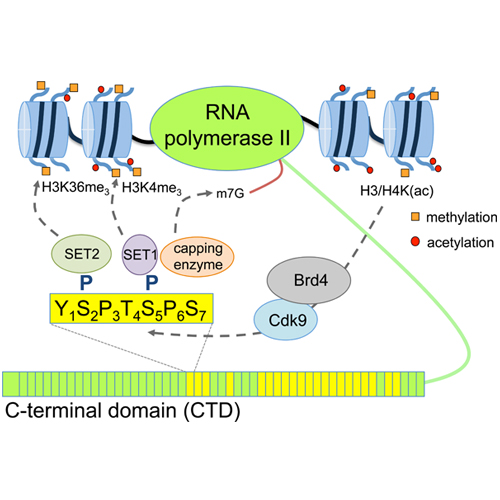The RNA Polymerase II Carboxy-Terminal Domain (CTD) Code
16-Aug-2013
The smallest viable unit of life is the cell. From bacteria to mammals, all cells use the same nucleic acid-based universal code for the maintenance and inheritance of genetic information. All life on earth probably started with a common ancestral cell1 approximately 4 billion years ago. Today, a huge diversity of organisms live on Earth, many of them still at the evolutionary stage of unicellular organisms, while others are life forms of high complexity with large cell numbers. The development of this diversity was driven by evolution, a process assuring survival and adaption of life to new environmental challenges. While the first evolutionary processes were probably very simple genetic changes, these processes gradually became more sophisticated with the development of higher eukaryotes. In this Review, we will focus on a molecular structure that first evolved approximately 1 billion years ago, but later revolutionized and accelerated evolutionary processes in higher eukaryotes and, thereby, strongly expedited their development. This molecular structure is placed at the carboxy-terminus of the large subunit (Rpb1) of RNA polymerase II (RNAPII) and will be termed the CTD (Cterminal domain) throughout this Review.











